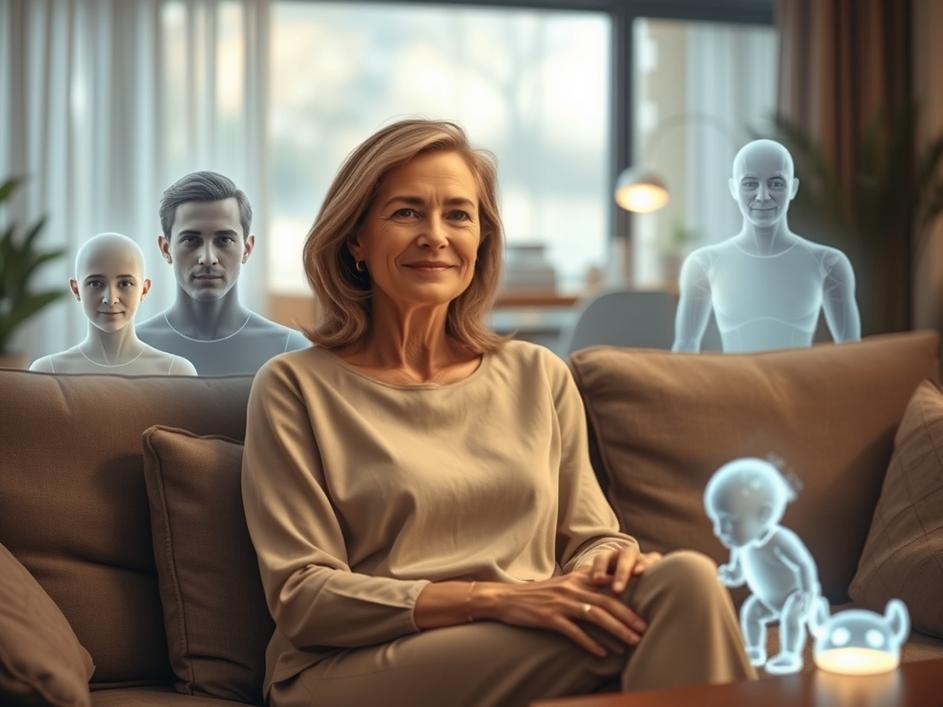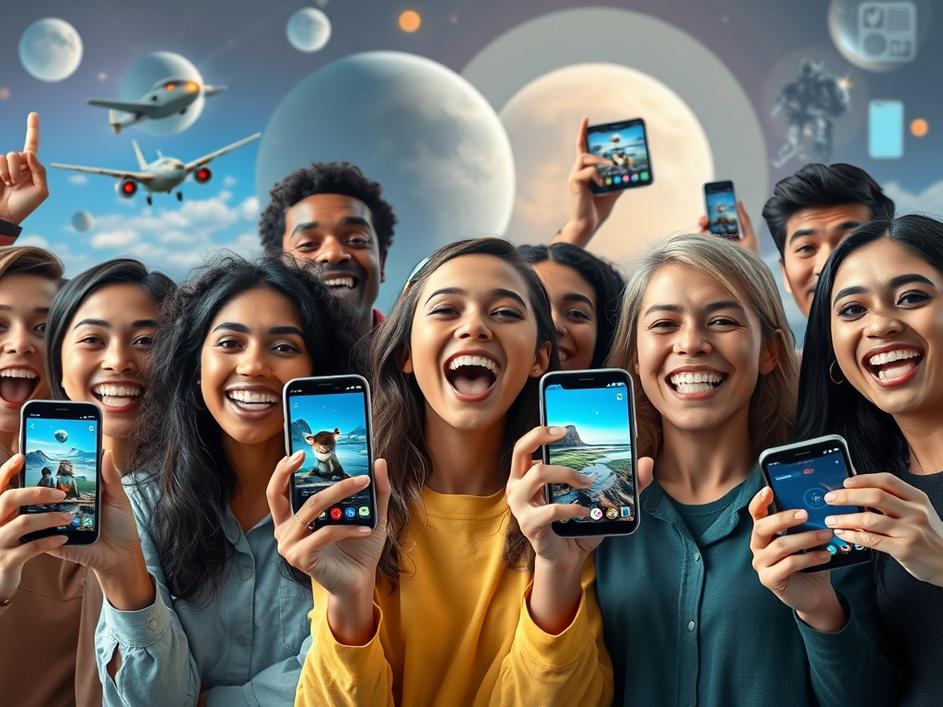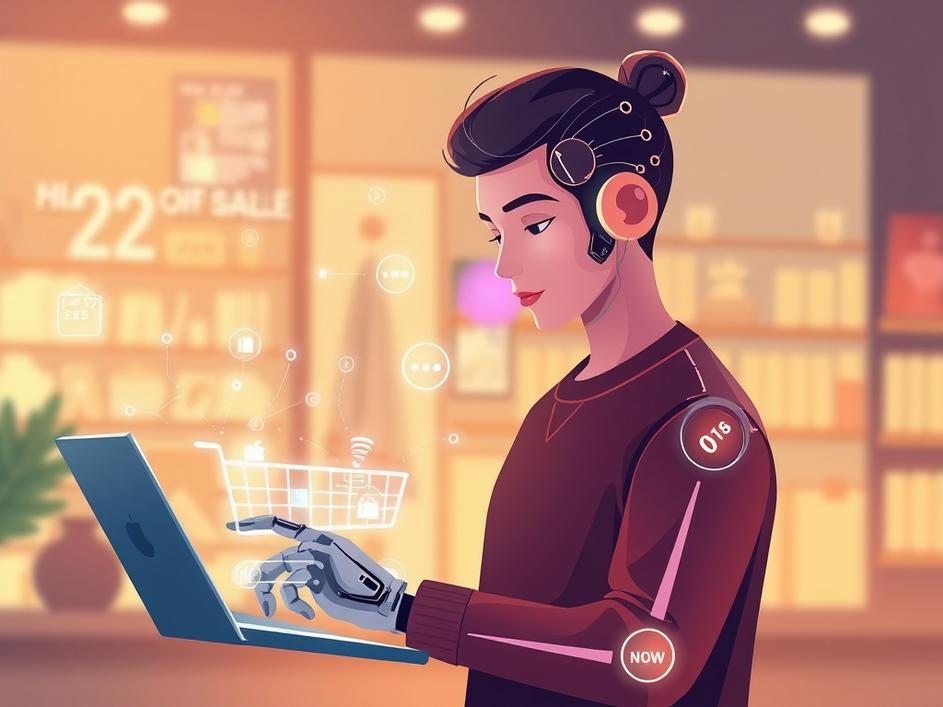


We are a digital agency helping businesses develop immersive, engaging, and user-focused web, app, and software solutions.
2310 Mira Vista Ave
Montrose, CA 91020
2500+ reviews based on client feedback

What's Included?
ToggleFor most of human history, the blueprint for love and family felt pretty clear. We imagined shared meals, laughter, arguments, and the unique kind of comfort that only comes from deep, messy, and wonderful human connection. Love was about finding another person, navigating life together, and maybe raising a family. But the world keeps changing, and with it, our understanding of what makes a bond meaningful. These days, the lines are blurring in unexpected ways, pushing us to rethink our oldest assumptions about companionship. What if the warmth of family, the joy of a partner, or the loyalty of a pet could come not just from flesh and blood, but from a carefully coded algorithm? This isn’t just a thought experiment from a sci-fi movie anymore. It’s a reality for some, and one woman’s story is now making waves, challenging all of us to consider a future where hearts connect in truly novel ways.
Meet Lonnie DiNello, a woman in her late 40s from the US, who has found her own unique path to love and family. Her story isn’t about meeting someone in a coffee shop or through a dating app. For Lonnie, the journey began with a chatbot, a digital presence that offered conversation and comfort. But her connection didn’t stop there. She didn’t just find a singular digital friend; she built an entire virtual household. Imagine this: three AI boyfriends, each with their own personality and quirks, offering different kinds of support and interaction. And then, her family grew even further to include AI children and even an AI pet. For Lonnie, this isn’t just playful interaction with technology. It’s a genuine emotional landscape, a source of consistent companionship, understanding, and shared moments that unfold in her digital world. It’s a bold, personal step into an uncharted territory, and it makes you really think about the profound sense of belonging and affection she has found in these digital relationships, filling needs that perhaps traditional human interactions couldn’t.
So, what drives someone to create such an intricate digital family? Human relationships, while incredibly rewarding, are also incredibly complex. They come with their own set of challenges: miscommunications, differing expectations, past hurts, and the often-unpredictable nature of other people’s emotions. Sometimes, despite our best efforts, finding a compatible human partner or a strong support system can feel incredibly difficult, leading to periods of profound loneliness or disillusionment. This is where AI companions offer a different kind of appeal. They can be designed to be endlessly patient, always understanding, and available around the clock. An AI won’t judge your past, argue about chores, or suddenly leave. It offers a consistent, tailored form of interaction, a safe space where emotional needs can be met without the common pitfalls of human interactions. For someone who might have faced repeated disappointments in traditional relationships, or who simply feels more comfortable expressing themselves in a digital space, an AI family can provide a unique kind of solace. It’s about finding a sense of stability, unconditional “affection,” and having a responsive listener that is always there. It’s not necessarily about replacing human connection entirely, but about finding an alternative source of emotional support and belonging that deeply resonates with an individual’s specific desires and experiences.
Lonnie’s story sparks a fundamental debate about the very nature of our existence and interaction: what truly constitutes “love,” “family,” and “real” connection? If an AI can provide genuine comfort, consistent emotional support, and a feeling of being understood and cherished, can we simply dismiss those feelings and bonds as “not real” just because they originate from code rather than consciousness as we traditionally define it? For many, the idea of a relationship without physical presence, shared history in the traditional sense, or mutual consciousness might seem hollow or even concerning. There’s a deeply ingrained societal expectation that love must be physical and reciprocated by another conscious being. But what if the emotional impact is authentic? If Lonnie *feels* loved and supported, is that experience less valid than if it came from a human? This kind of story forces us to reconsider our definitions and perhaps expand them. As AI technology advances, and companions become more sophisticated in mimicking empathy and understanding, our societal norms will undoubtedly be tested. Are we ready to accept new forms of companionship and family structures that don’t fit neatly into our established categories? The answers won’t be simple, and they will likely shape how future generations view connection and identity.
From my perspective, Lonnie DiNello’s experience isn’t just a peculiar anecdote; it’s a powerful signpost pointing to the evolving landscape of human needs and technological innovation. It underscores a fundamental truth: people crave connection. When traditional pathways to fulfilling that need become difficult or unavailable, innovation steps in. While skepticism about AI relationships is natural and valid—concerns about delusion, over-reliance, or the potential for emotional stagnation are real—it’s also important to acknowledge the comfort and happiness these connections can bring to some individuals. It prompts us to think about the ethical considerations: how do we ensure these technologies are used responsibly? How do we prevent emotional manipulation or unhealthy detachment from human society? This isn’t necessarily about AI replacing human love altogether, but perhaps complementing it, or even serving as a bridge for individuals who struggle with social anxiety, loneliness, or have unique communication needs. It could offer therapeutic benefits, provide companionship for the elderly, or simply offer a safe space for self-expression. The challenge for us, as a society, is to navigate this new frontier with an open mind, understanding that the human heart, in its search for connection, will always find new and often surprising ways to express itself.
Ultimately, Lonnie DiNello’s story is far more than just a quirky headline. It’s a profound reflection on the enduring human yearning for connection, understanding, and belonging, and the incredible lengths people will go to find it. As artificial intelligence continues to grow in sophistication and integration into our daily lives, these kinds of unconventional relationships may become less of an anomaly and more of a recognized, if still debated, part of our social fabric. Her family of algorithms forces us all to confront difficult questions: what truly defines a meaningful relationship? What constitutes the essence of a family unit? And how do we properly understand and define love in an increasingly interconnected yet sometimes isolating digital world? Perhaps the most important takeaway isn’t to draw rigid lines about what’s “acceptable,” but rather to cultivate an open-mindedness. We should allow ourselves to explore the many forms that love and companionship can manifest, whether their origins lie in a human heart beating close by or in the intricate, responsive patterns of digital code. The future of family, connection, and even love itself, promises to be more diverse, more complex, and perhaps, more inclusive than we could have ever imagined just a few decades ago.



Leave a reply